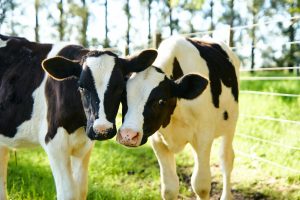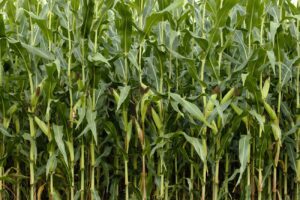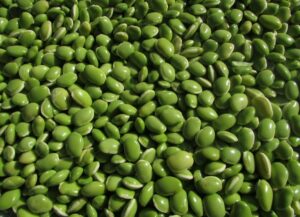Álvaro García
Birth and early care
Bessie was born one morning in a clean maternity pen on a dairy farm. Like all calves, she entered the world without any immunity because cows do not transfer antibodies to their offspring through the placenta. Antibodies are special proteins produced by the mother, and later by Bessie herself, that help recognize and fight harmful germs. Without them, Bessie would be defenseless against infection, making her highly vulnerable to illness and even death in her first few days of life.
First-time calving cows, or “first calvers,” sometimes produce lower-quality colostrum because their immune systems have not built up a strong bank of antibodies over time. They may also be nervous or inexperienced, making them less likely to let the calf nurse long enough. For these reasons, within the first hour of life, a farm worker gives Bessie a bottle of colostrum that has been assessed to ensure it contains a high concentration of antibodies. This early feeding is essential to help her withstand the bacterial challenges she will face during her first weeks.
Individual housing in a clean, well-ventilated space reduces disease risk significantly. It also allows caregivers to closely monitor Bessie’s intake, behavior, and overall health, something much harder to manage in group settings. This close attention supports the early detection of problems and ensures that every calf gets the nutrition and care she needs without any competition from others.
Bessie started off feeding from a nipple bucket and gradually learned to drink on her own from an open bucket. In addition to milk, she was offered a starter grain mix specially formulated to help develop her rumen, the part of her stomach that adult cattle rely on to digest fibrous feeds like hay and grass. Around 8 weeks of age, Bessie was weaned, meaning she no longer received milk and now relied entirely on solid feed and water. She was moved to a larger pen with a small group of other weaned calves, usually no more than ten, where she began developing social behaviors and adjusting to life in a group setting. Her diet transitioned to a mix of hay, silage, and grain specially formulated for growing heifers. During this stage, she continued to be closely monitored for weight gain and height to ensure she was growing properly.
Breeding and pregnancy
By the time she was a year old, Bessie had grown significantly. Her body weight and size were monitored closely to ensure she reached the right stage of development for breeding. Around 13 to 15 months of age, as she began reaching sexual maturity, she was artificially inseminated customary practice on most dairy farms. This method allows producers to select high-quality genetics from top bulls without the risks of keeping a live bull on the farm.
Artificial insemination is also safer for young heifers like Bessie, as it avoids the physical stress and potential injury that can occur during natural mating. In addition, it reduces the risk of transmitting reproductive diseases such as trichomoniasis, campylobacteriosis, bovine viral diarrhea (BVD), and leptospirosis, all of which can cause infertility, early embryonic loss, abortions, and prolonged calving intervals. Because semen is collected, processed, and stored under strict sanitary conditions and routinely evaluated for disease, the chances of introducing pathogens to animals like Bessie are reduced. Artificial insemination is therefore both a tool for genetic improvement and a safer option for reproductive health.
A few weeks later, a pregnancy check confirmed she had conceived. During the next nine months, Bessie was fed a specific ration to support both her own growth and the development of the calf she carried. She received regular health checks, vaccinations, and hoof trimming when needed. As calving approached, she was moved to a maternity pen with deep straw bedding where she could deliver her calf in a clean and quiet environment.
Giving birth to her first calf
Bessie gave birth to a healthy heifer calf at about 24 months of age. After delivery, the calf was dried off and fed colostrum, just like Bessie had been two years earlier. Bessie’s first lactation began shortly afterward, and she entered the milking herd.
At first, Bessie was hesitant. The milking parlor was new, full of noises and other cows, but within a few days, she adapted to the routine. She was milked two or three times per day. Her milk yield increased over the first weeks as her appetite grew, and her body recovered from the stress of calving.
Bessie’s ration was carefully balanced by a professional to meet the high energy demands of milk production. She received a mix of highly nutritious forages (like corn silage and alfalfa hay), grains, protein sources, vitamins, and minerals. The goal was to help her maintain a healthy body condition while supporting high milk yield. Her water intake also increased significantly, she drank over 30 gallons a day.
Each day, her milk was measured electronically. Any signs of mastitis (udder infection), lameness, or reduced feed intake were noted by farm workers or flagged by automated systems. If necessary, she was separated from the herd temporarily for treatment. Fortunately, Bessie stayed healthy.
Rebreeding and the dry period
About 60 to 80 days after calving, Bessie was checked to see if she had resumed normal reproductive cycles. If so, she was inseminated again. If conception did not happen on the first attempt, she was re-inseminated during the next cycle, approximately 21 days later. Pregnancy checks were done through ultrasound or rectal palpation by a veterinarian or trained technician.
By 100–120 days into her first lactation, Bessie was confirmed pregnant again. After about 305 days of milking, her milk production naturally began to decline. She was then “dried off”, milking was stopped so her udder could rest and prepare for the next lactation. During this 6–8-week period, she remained on the farm but was moved to a more relaxed part of the facility with other dry cows. Her diet during this phase included lower-energy forages like grass hay, essential minerals, and clean water, aimed at maintaining body condition without overfeeding.
The cycle repeats
As her second calving date approached, Bessie was moved once again to the maternity pen. Her body had matured; she was now a full-grown cow with one lactation behind her. This time, the process was smoother. She gave birth to another healthy calf, and after a brief rest, she rejoined the milking herd for her second lactation.
A typical dairy cow like Bessie will go through several of these cycles in her lifetime, producing milk and calves over 4–6 years. Some cows remain productive even longer if they stay healthy and maintain good milk yields.
Eventually, when her milk production drops below herd averages or if she experiences recurring health problems, Bessie may be removed from the milking herd. This is a standard part of herd management, as farms must balance productivity, health, and animal well-being. If she remained healthy and produced good calves and consistent milk, she might stay in the herd for several lactations. Some cows produce over 100,000 pounds of milk in their lifetime.
While the natural lifespan of a cow can exceed 15 years, most dairy cows have shorter productive careers due to the physical demands of lactation, reproduction, and farm economics. Throughout her life, Bessie’s care was shaped by a system designed to monitor her well-being, improve efficiency, and ensure the health of both her and her offspring.
© 2025 Dellait Knowledge Center. All Rights Reserved.









